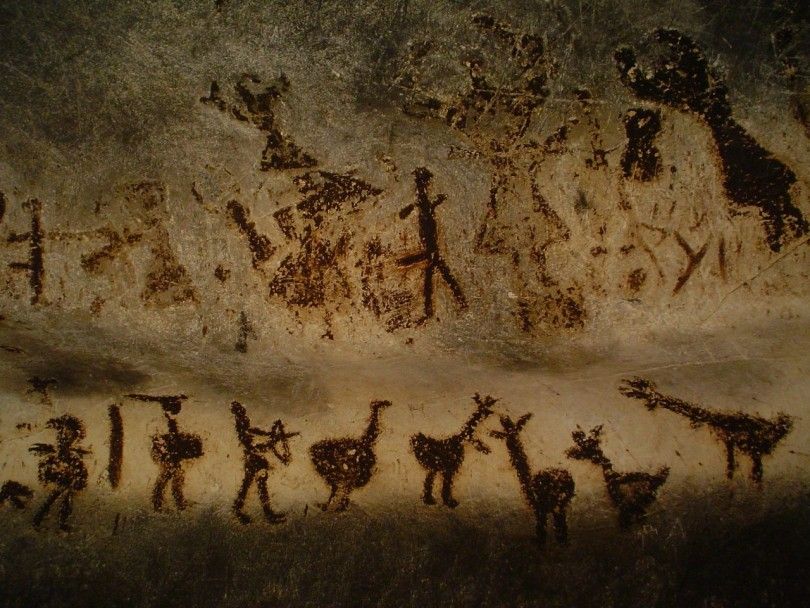Изучив изображения на стенах европейских пещер, ученые пришли к выводу, что первую примитивную систему письма люди создали не в эпоху земледельческих цивилизаций Месопотамии, а значительно раньше — около 40-30 тысяч лет назад. Свою гипотезу исследователи представили в новой книге «The First Signs», а коротко о ней сообщает National Geographic.
Imagine yourself as a caveman or woman. The place: Europe. The time: 25,000 years ago, the last Ice Age. In reality, you live in an open-air tent or a bone hut. But you also belong to a rich culture that creates art. In and around your cave paintings are handprints and dots, x’s and triangles, parallel lines and spirals. Your people know what they mean. You also use them on tools and jewelry. And then you vanish—and with you, their meanings.
Join renowned archaeologist Genevieve von Petzinger on an Indiana Jones-worthy adventure from the open-air rock art sites of northern Portugal to the dark depths of a remote cave in Spain that can only be reached by sliding face-first through the mud. Von Petzinger looks past the beautiful horses, powerful bison, graceful ibex, and faceless humans in the ancient paintings. Instead, she’s obsessed with the abstract geometric images that accompany them, the terse symbols that appear more often than any other kinds of figures—signs that have never really been studied or explained until now.
Part travel journal, part popular science, part personal narrative, von Petzinger’s groundbreaking book starts to crack the code on the first form of graphic communication. It’s in her blood, as this talented scientist’s grandmother served as a code-breaker at Bletchley. Discernible patterns emerge that point to abstract thought and expression, and for the first time, we can begin to understand the changes that might have been happening inside the minds of our Ice Age ancestors—offering a glimpse of when they became us.
Канадский палеоантрополог Женевьева фон Петцингер (Genevieve von Petzinger) из Университета Виктории и ее коллеги создали базу данных геометрических узоров в пещерах. Изначально фон Петцингер полагала, что люди ледниковой эпохи начали с небольшого числа фигур, а со временем этот набор расширялся. Однако выяснилось, что уже в ориньякской культуре (40-28 тысяч лет назад) использовалось три четверти от обнаруженных палеоантропологами знаков.
Чтобы уточнить этот вопрос, фон Петцингер собрала данные по 367 образцам наскального искусства верхнего палеолита от Испании до Урала, а также обследовала на предмет наличия геометрических фигур статуэтки и украшения.
Оказалось, что по всей Европе в тот период использовали всего 32 типа «знаков». Единообразие фигур, по мнению ученой, говорят о том, что они представляли собой элементы единой коммуникационной системы, которую Homo sapiens создали еще до своего прихода на континент.
По мнению фон Петцингер, данные геометрические фигуры не могли использоваться ни для фонетического (один знак — один звук), ни для пиктографического (один знак — одно слово или понятие) письма. Однако они применялись для хранения и передачи информации: в примитивных картах или как памятки для запоминания важных мифов или обрядов.
Если вы нашли ошибку, пожалуйста, выделите фрагмент текста и нажмите Ctrl+Enter.








Сообщить об опечатке
Текст, который будет отправлен нашим редакторам: